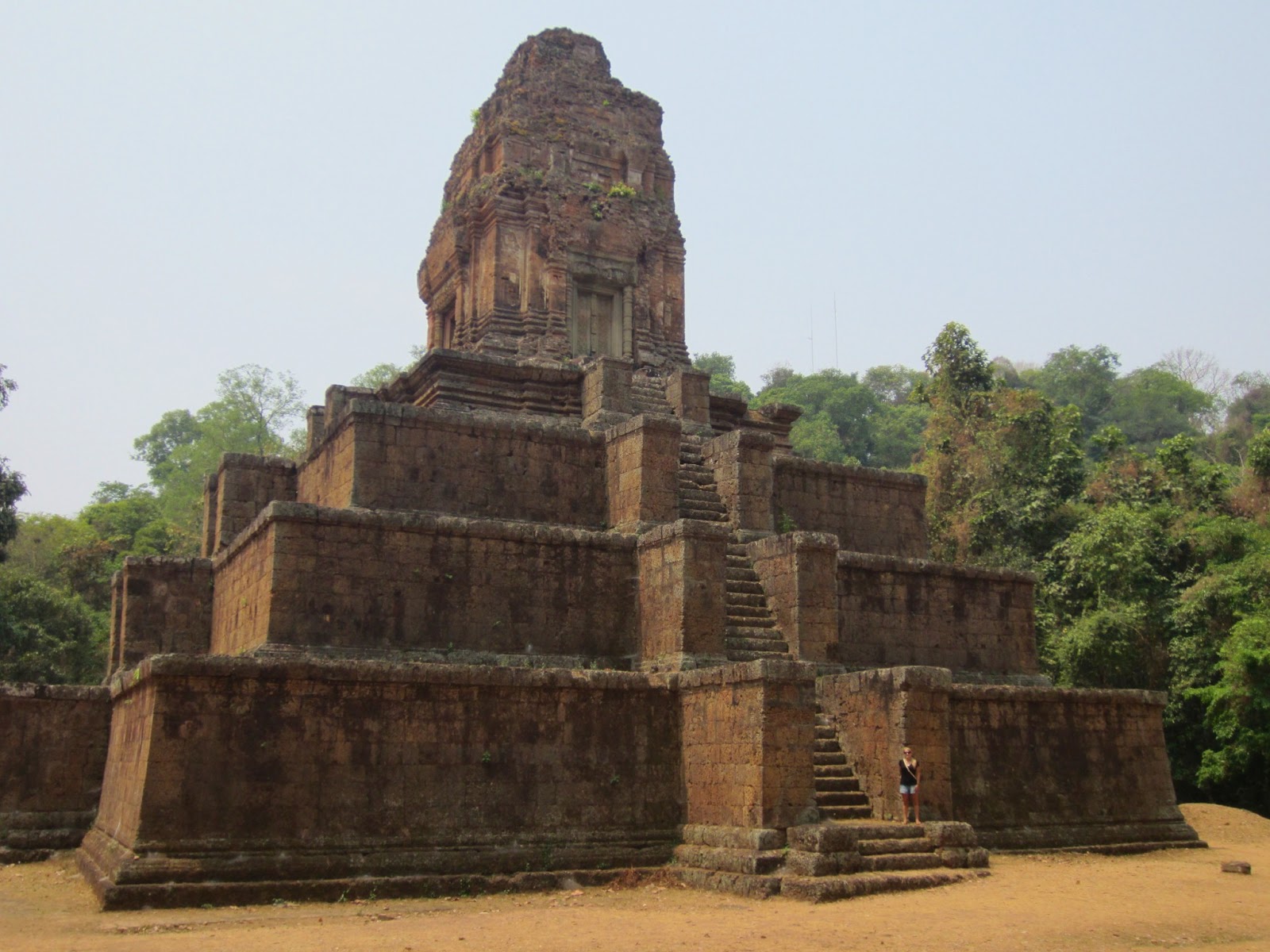On our way to Siem Reap we stayed a night in Kampong Cham to break up the trip. From there, we managed to find our way on a morning bus (apparently it was another "holiday" and drove the demand up for seats) where we were put on the back row atop the engine, which caused our seats to be very hot and add to our sweat box of a ride... but we survived.
It was not obvious to us before we started traveling; however, we quickly found out that the "thing to do" in in SE Asia was to go to Siem Reap and visit Angkor Wat. It's a staple for tourism such as Machu Pichu, the Great Wall of China, or the Eifel Tower. Thus so, the town of Siem Reap had plenty of restaurants, shops, spas, etc. focused toward tourists. Lucky for us, our first day there we found a Mexican place called, Viva. We know what everyone is thinking....."Mexican food in Cambodia???"......but we didn't care, it was actually pretty good. We had been craving chips and salsa, and Kristin loved the mango margarita (all 4 times we went).
Now, a little bit about Angkor Wat, which actually means "Temple City" or "City of Temples". The main temple, Angkor Wat, was actually built around the year 1100. There are other temples around it built in the years previous to its construction, and then others such as Bayon, and Angkor Thom which were built later in the 12th century. The wats were originally designed and used as Hindu temples, but in the 13th century transitioned into Buddhist use as they still are today. Angkor Wat has gone through the most extensive amount of renovation as it is the main attraction, but there is continuous efforts on the other temples in the complex as well.
The travel rumor mill informed us that we needed a minimum of 2 days to see the wats (temples). Our first day, we took bikes from our hostel and rode out to see the largest Hindu temple complex of the world known as Angkor Wat, in fact, it is the largest religious monument in the world! We slept in and went after breakfast which meant it was HOT, a Houston in August kind of heat. Despite the sun beaming down, we spent the afternoon riding around the temples and observing them in awe.
To us the next most impressive temple after Angkor Wat was the Bayon temple. Each of the various temples throughout Angkor Wat were designed/built by a different king from the Khmer empire and has its own influences and symbolism based on the king's choosing. Bayon was memorable because of the number of massive stone faces on the many towers.
More pictures from various "smaller" temples.
That evening after some more Mexican food, we headed back to the night market. After all the walking from that day, Kristin decided to get a fish feeding pedicure while we watched a film on the history and significance of Angkor and how it was built. The little fish "bite" off the dead skin on the feet. Kristin said it tickled a lot!
Can you believe Angkor Wat was completed in roughly 30 years? Quite impressive given the lack of tools and technology back in that time, and the fact that because of the wet season they couldn't work for a few months out of each year. The Angkor Wat temple is a powerful symbol in Cambodia and is used on many various items such as their flag, national beer, etc. The temple is a source of national pride and means a lot to the country. Despite the many hardships the country has endured, the temple symbolizes a great accomplishment that was built by their own people and has survived the test of time.
The next day we woke up at 4:30 AM and hit the road by 5 on our bikes (the evening before, Matt went and got a mountain bike to ride that was much better for him). It is common for hundreds, if not thousands, of tourists to try and capture the classic photo of Angkor right at sunrise when the sun comes up from behind the massive temple. Who'd want to miss out on that? Well, sadly it was very cloudy that morning and we all missed out on the "classic photo". Luckily, the people watching was still entertaining.
After the sun was up, we grabbed a bite to eat and then went on the "small circuit" tour of more temples. It was much cooler starting out so early, so we were able to enjoy the temples a little more. Having said that, we still grew tired and perhaps a little bored by 10:30 AM (we figured that might happen). We felt like we had seen quite a bit of Angkor Wat (for us at least) and went back to rest, nap, and eat Viva (again) for lunch. Don't judge.
The next morning it was time to move on and catch a 6 hour bus to Phnom Penh.



































Nice pics.Siem reap is the biggest city in cambodia. This is adventurous and beautiful place.
ReplyDeleteIts really great review to know about this information..Thanks a lot for sharing your post.
ReplyDelete